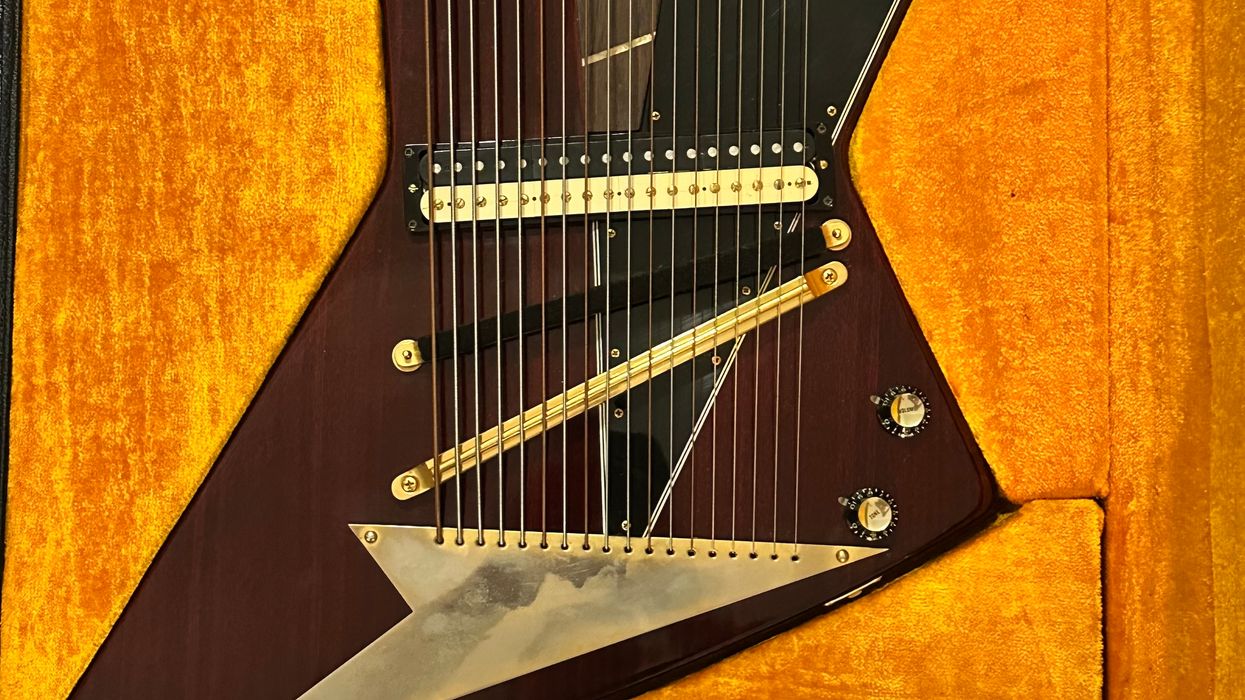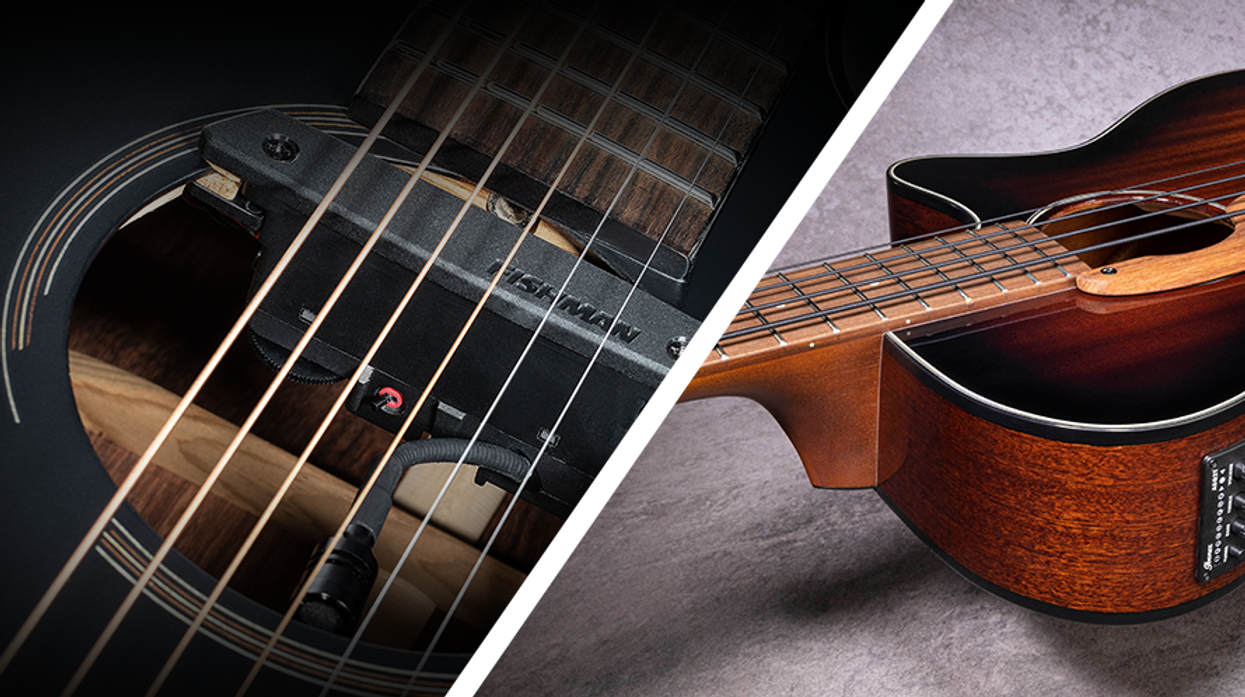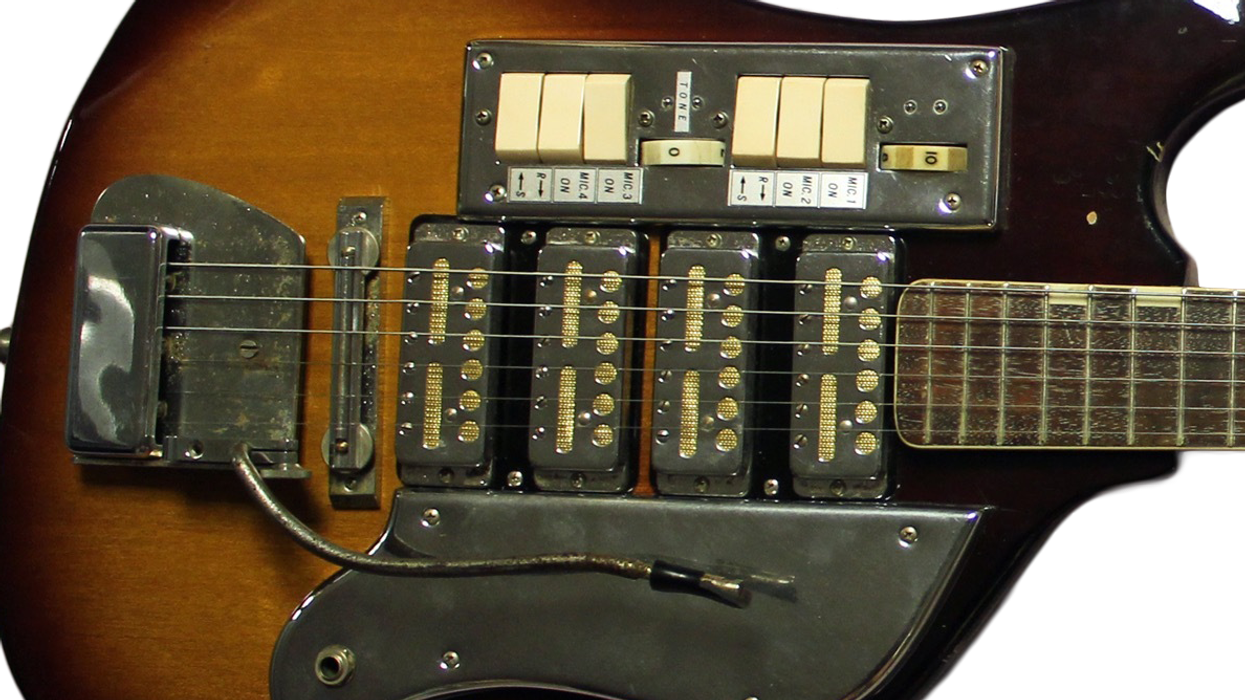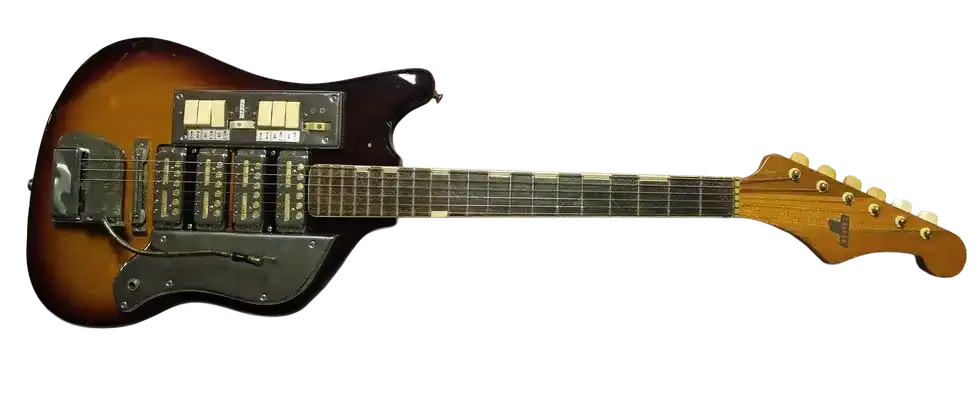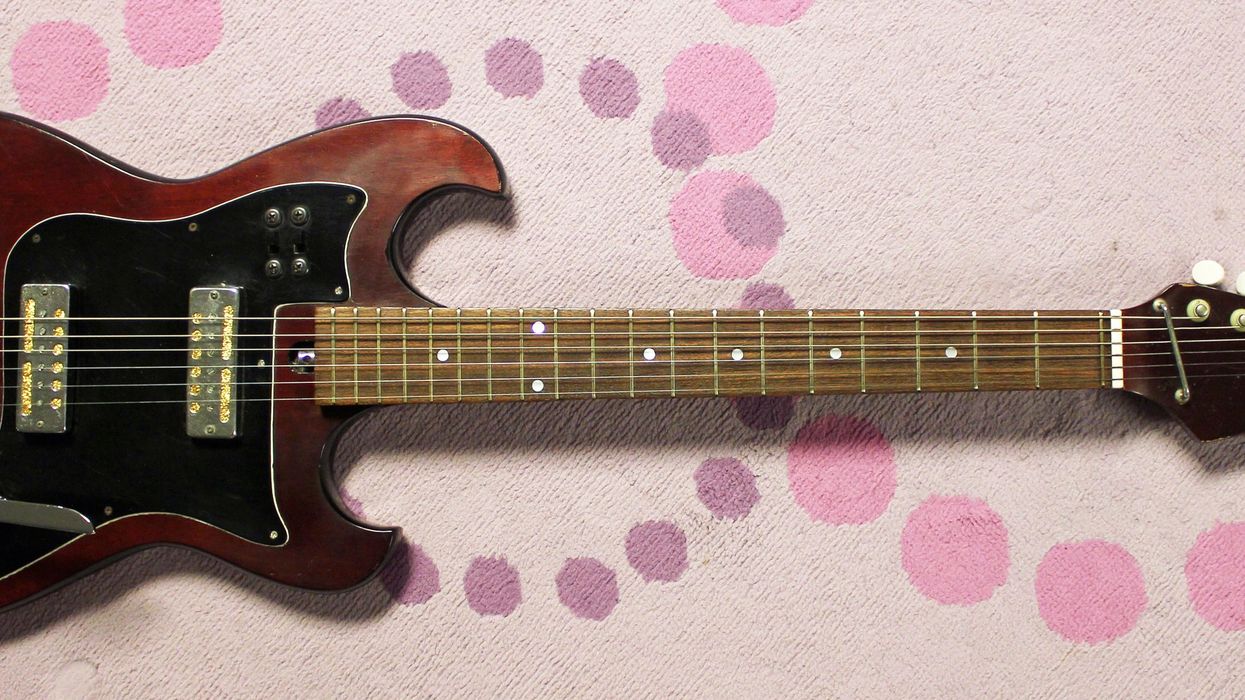When I was in my early days of researching guitar history, I embraced all sorts of guitars from all over the place, from kitchen countertop guitars to cheap rusty resonator jobs. I really had no focus whatsoever. Every topic, as it related to guitars, was rather fascinating. Eventually, though, I moved towards crazy electrics and away from folksy acoustics. I wanted loud, interesting, and rare, and in my eyes acoustic guitars were all sort of the same. I know, I know … they aren’t the same at all. But in the 1960s, acoustic guitars were copies of copies, and they just never really held my interest. For this month, when I was tasked to write about an acoustic guitar, the choice was easy since I only own one.
My acoustic guitar is an early 1960s Kay model that has seen its share of wear and fixed cracks. Based on the size, it’s most likely the Kay Plains Special, with mahogany sides and a solid spruce top. When I first saw this worn-out old boy with the art deco headstock, I could tell someone really loved it. The neck has a lovely deep-V shape, and even though the guitar was in disrepair, I wanted to give it a second chance. So, off it went to a few different techs who gave it a refretting (Kay used some pretty bad frets), crack repairs on the top, a neck reset, and a reglued bridge.
I suppose most folks wouldn’t want to put that kind of money into a cheap guitar, but, in my eyes, it’s like recycling. The Kay Musical Instrument Company was one of two Chicago-based manufacturing behemoths, along with Harmony. (Valco, the other notable Windy City-based instrument maker, merged with Kay in 1967.) Both companies specialized in interesting fare, often geared towards beginners and intermediate players. I love so many of the old Kay and Harmony guitars.
Vintage Kay Acoustic Demo with DeArmond Model 210 Pickup
Hear guitarist Mike Dugan slide and strum on the author’s Kay/DeArmond combination.
With this acoustic, I knew what I needed to add, and that came from Toledo, Ohio. I’ve often mentioned that I grew up and live near the Martin Guitar Factory in Nazareth, Pennsylvania. When I was a kid, I took my first guitar lessons at a little music shop called the Nazareth Music Center (and it’s still open for business). Throughout the ’80s, as my love affair with guitars began to grow, I frequented the quaint little shop that was a converted two-story home. The waiting room was the old kitchen and the lesson rooms were in the basement. On the first floor was a counter on the left and some instruments for sale on the right … kind of like a sitting room. I wish I could travel back in time because that store, back then, had amassed all sorts of inventory from several decades of business. One item that always held my interest were the blue and white boxes of DeArmond pickups that were still new in the package. These were the early days of my interest in “hot-rodding” guitars and mixing and matching parts, so I ended up buying a few of these old pickups.
The DeArmond Company was started in Toledo by Harry DeArmond and, since the mid-1930s, they specialized in guitar pickups that could be attached to acoustic and archtop guitars. They definitely filled a need, since electric guitar popularity was just around the bend. The company made all sorts of crazy pickups and almost all of them sound amazing.
My favorite of the old DeArmond pickups is the model 210, which always seemed to be the most powerful sounding to my ears. Plus, this pickup is fully adjustable via the threads on the polepieces. There’s a whole laundry list of professionals who’ve used the DeArmond 210, and I can understand why—it just has that vintage sound built right in. (Of course, back then, that sound was contemporary!) I use this pickup with my old Kay as a slide player with open tunings.
There’s a lesson here for all you acoustic players that shun the new and fancy and innovative. Take an old American-made acoustic and an old American-made pickup, and you really have something.


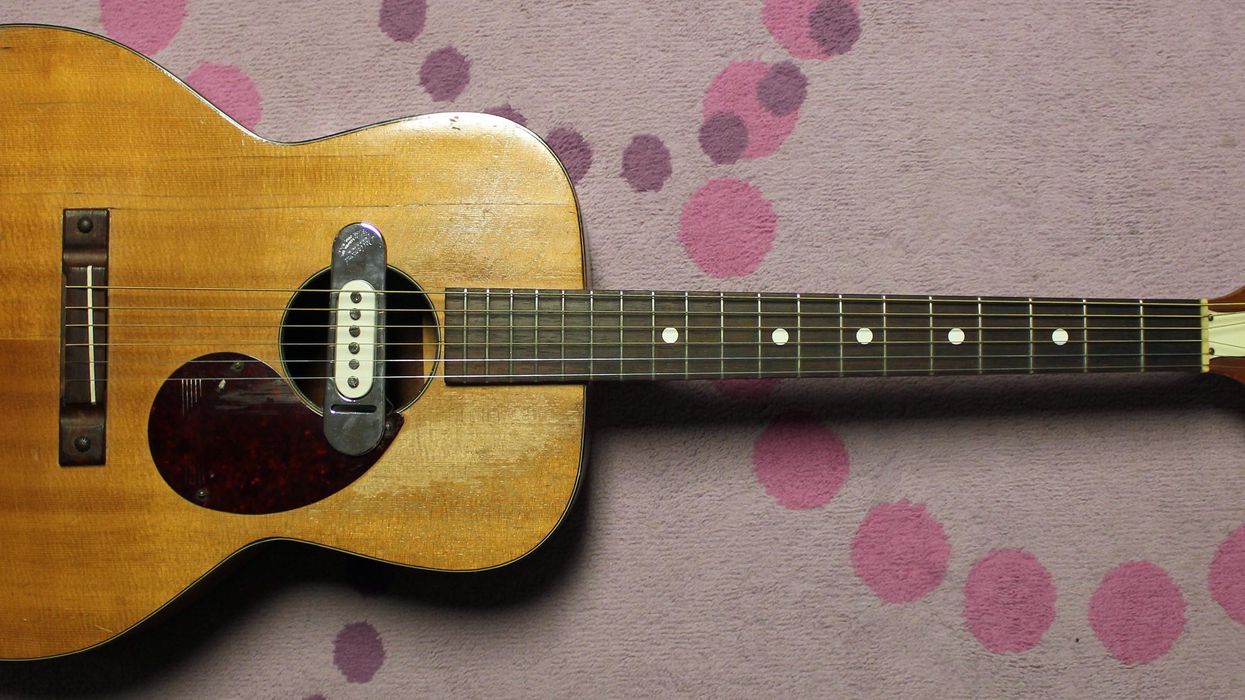



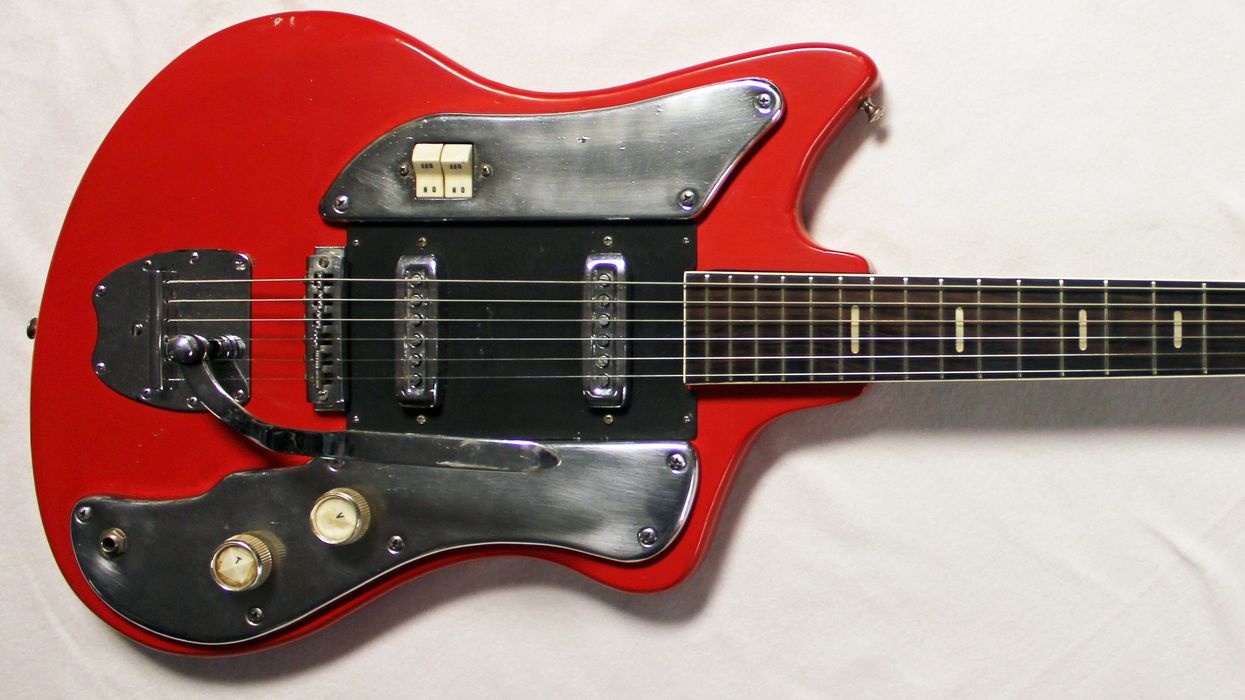

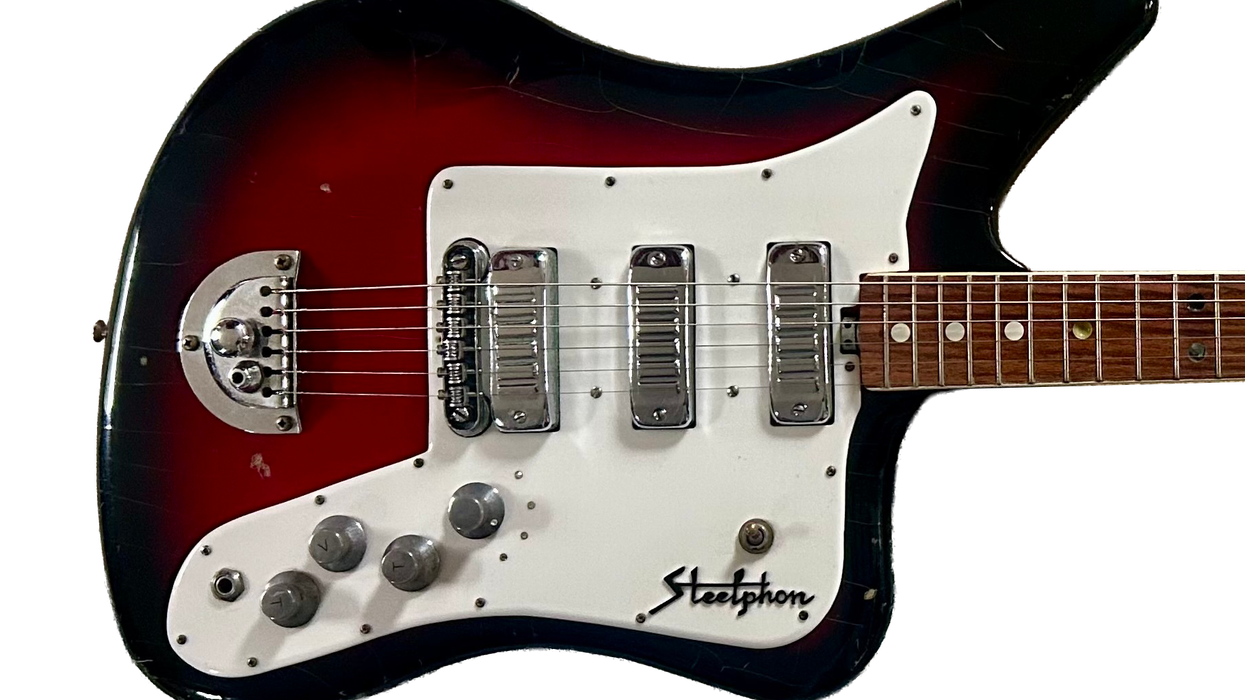
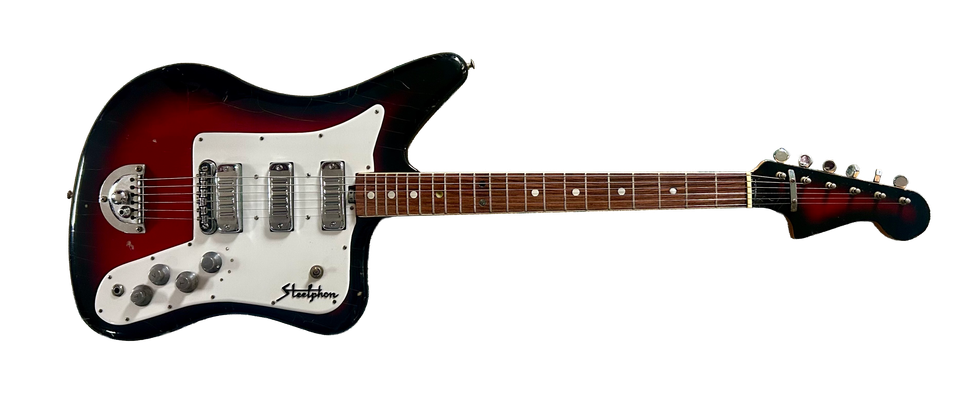 Then, in the dream, I “awoke” and realized I was back in my bedroom, and it was all just a dream. The kicker is that I was still dreaming, because that “paddle” guitar was suddenly in my hands—then I woke up for real! How about that misadventure?
Then, in the dream, I “awoke” and realized I was back in my bedroom, and it was all just a dream. The kicker is that I was still dreaming, because that “paddle” guitar was suddenly in my hands—then I woke up for real! How about that misadventure?![Rig Rundown: Russian Circles’ Mike Sullivan [2025]](https://www.premierguitar.com/media-library/youtube.jpg?id=62303631&width=1245&height=700&quality=70&coordinates=0%2C0%2C0%2C0)

